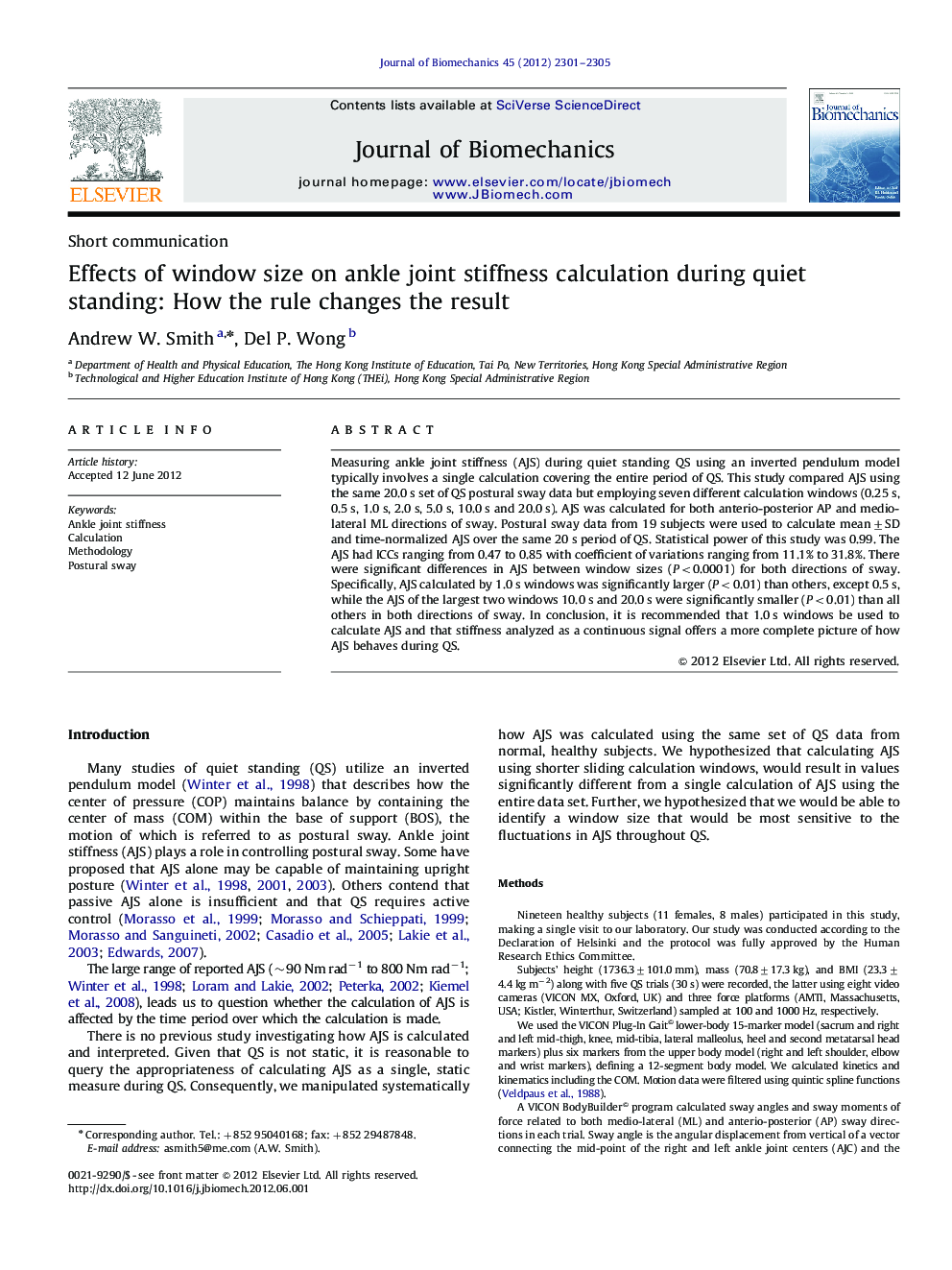| Article ID | Journal | Published Year | Pages | File Type |
|---|---|---|---|---|
| 872563 | Journal of Biomechanics | 2012 | 5 Pages |
Measuring ankle joint stiffness (AJS) during quiet standing QS using an inverted pendulum model typically involves a single calculation covering the entire period of QS. This study compared AJS using the same 20.0 s set of QS postural sway data but employing seven different calculation windows (0.25 s, 0.5 s, 1.0 s, 2.0 s, 5.0 s, 10.0 s and 20.0 s). AJS was calculated for both anterio-posterior AP and medio-lateral ML directions of sway. Postural sway data from 19 subjects were used to calculate mean±SD and time-normalized AJS over the same 20 s period of QS. Statistical power of this study was 0.99. The AJS had ICCs ranging from 0.47 to 0.85 with coefficient of variations ranging from 11.1% to 31.8%. There were significant differences in AJS between window sizes (P<0.0001) for both directions of sway. Specifically, AJS calculated by 1.0 s windows was significantly larger (P<0.01) than others, except 0.5 s, while the AJS of the largest two windows 10.0 s and 20.0 s were significantly smaller (P<0.01) than all others in both directions of sway. In conclusion, it is recommended that 1.0 s windows be used to calculate AJS and that stiffness analyzed as a continuous signal offers a more complete picture of how AJS behaves during QS.
